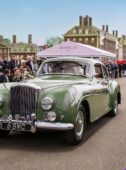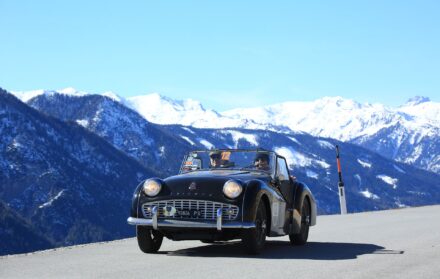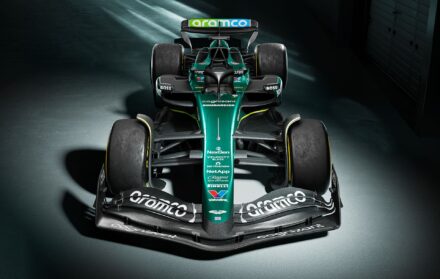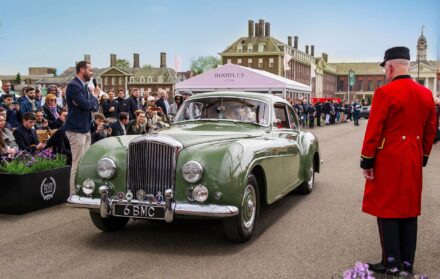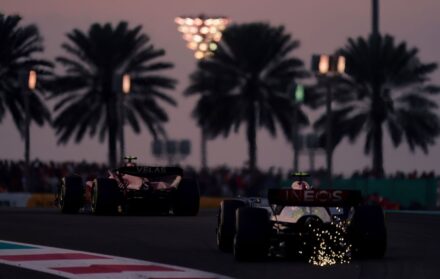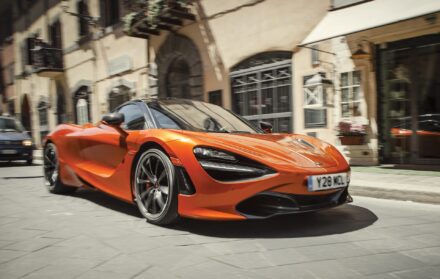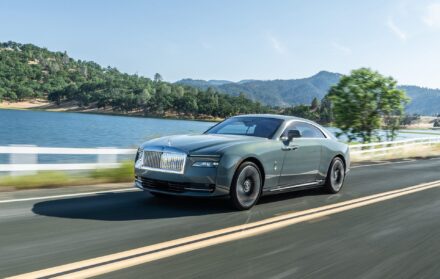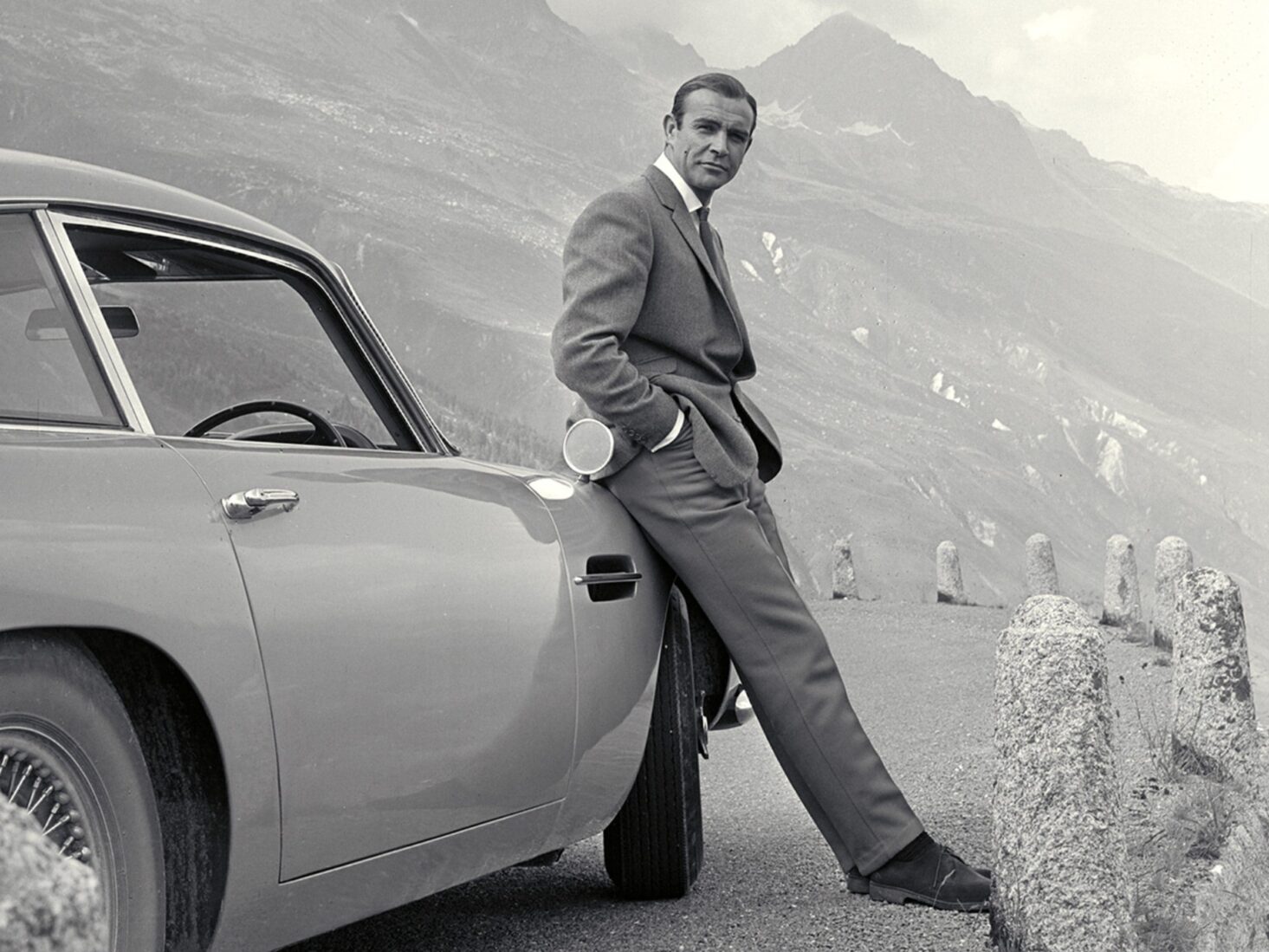
What are the world’s most iconic classic cars– and why are they so collectable?
From the Jaguar E-Type to Aston Martin’s DB5, from Ferrari’s Dino 246 GT to the Lamborghini Miura, these are the motors that made automotive history
Sponsored by:
Footman James
Rock stars and royalty. They may occupy pedestals on polar-opposite sides of the social spectrum, yet a quick look at the types of vehicles insured by these groups of diametric demigods shows a surprising similarity in automotive taste.
Footman James, one of the UK’s leading classic vehicle insurance specialists, has arranged cover for enthusiasts and investors for more than 35 years.
So, just what are the most iconic classic and supercars of all time, and what makes them so sought-after among collectors? Footman James lifts the lid.
Jaguar E-Type
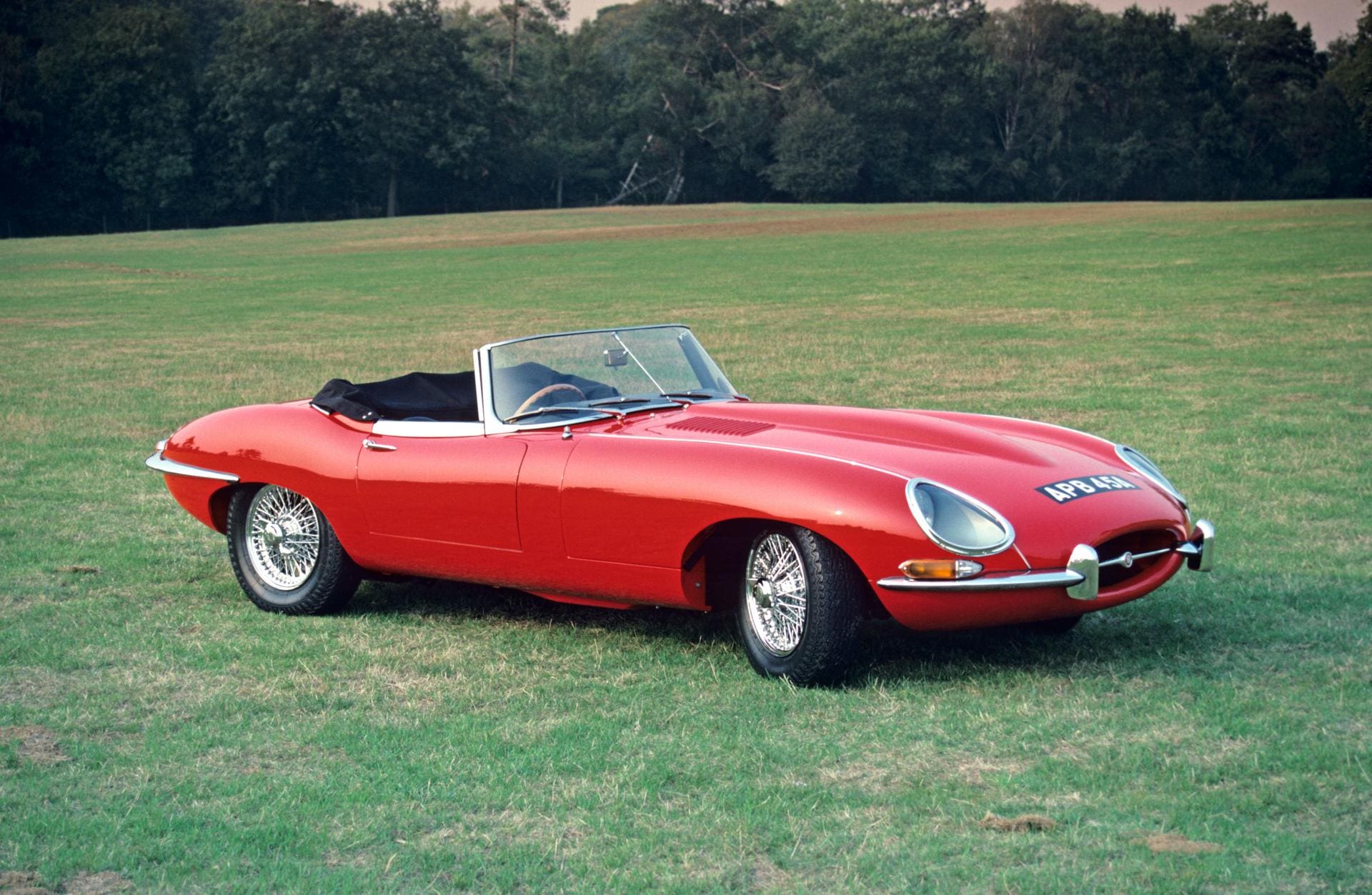
Upon seeing its svelte lines at the 1961 Geneva Motor Show, Enzo Ferrari called the Jaguar E-type “the most beautiful car ever made”. Shaped like a bullet, with its long bonnet and short rear overhang, the E-type was an instant sensation. The car was able to reach speeds of up to 150mph and, at £2,250, was remarkably affordable – giving the boys at Modena and Newport Pagnell something about which to worry.
At its launch in Switzerland, Jaguar was so inundated by test drive requests, that it was forced to send out another E-type to Geneva. Sir William Lyons, Jaguar’s founder, picked up the phone to Norman Dewis, Jaguar’s test driver, and ordered him to deliver a convertible model straight away.
Dewis completed the 600-mile journey in an astonishing 11 hours, at an average speed of 68mph. Rightly regarded as a blue-chip classic, the E-type had a total production run of 67,300 vehicles, starting with the Series 1 in March 1961 and ending with the Series 3 in February 1975. Prices fluctuate wildly, depending on condition, mileage and model year.
Porsche 911
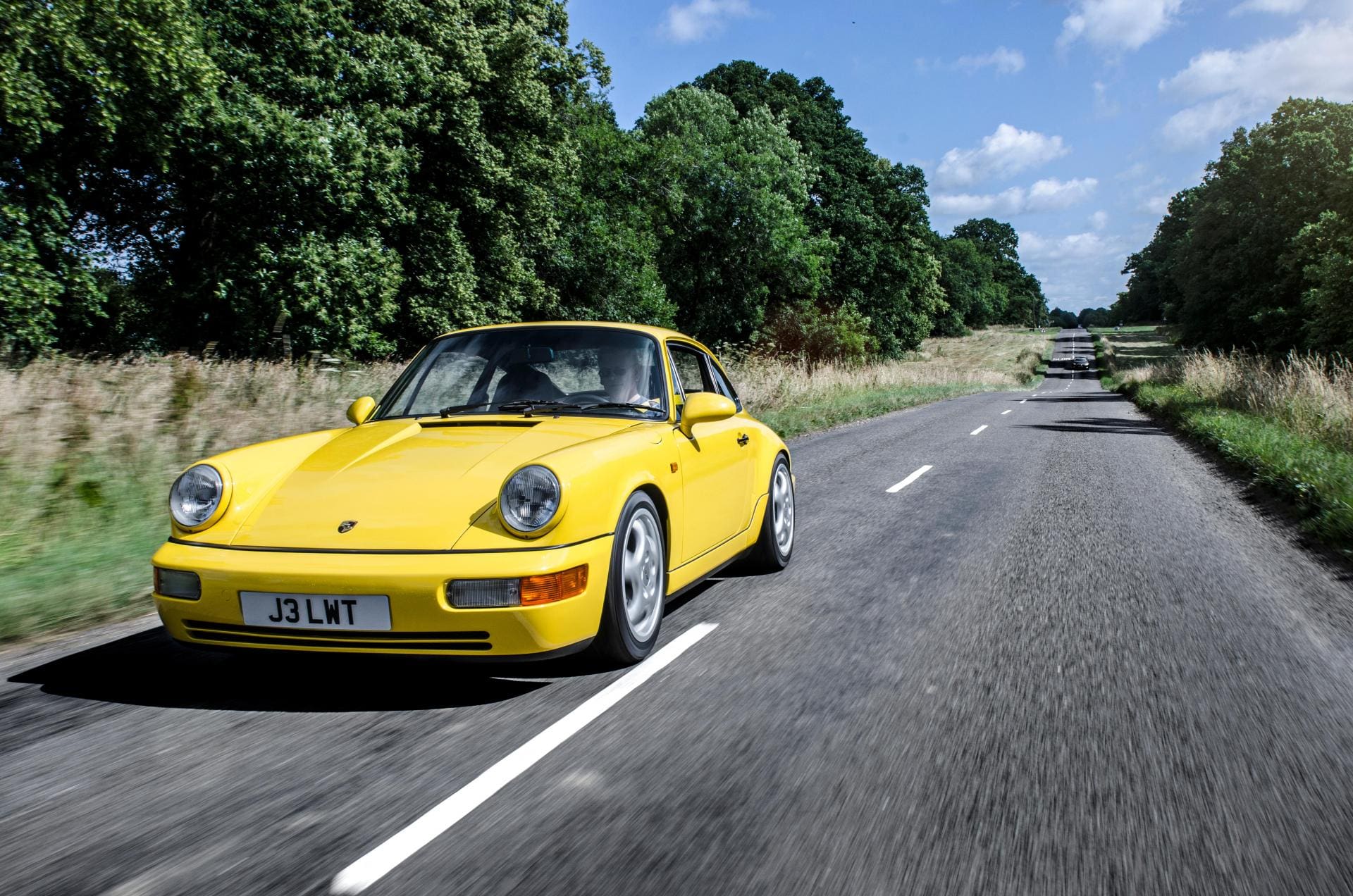
The Porsche 911 is a car that divides opinion. For many, its ubiquity makes it an uninspiring choice. Since Porsche debuted the original in 1963 (production continued until 1975), the Stuttgart-based manufacturer has introduced a further seven series, each of which has barely strayed from the initial design.
The most valuable Porsche 911s are low-production, high-performance, track-oriented models like the 964 Carrera RS, 993 GT2 or the newer 2010 911 Sport Classic. Should you have any doubts about just how cool the 911 is, remember, Keanu Reeves drives one.
Aston Martin DB5
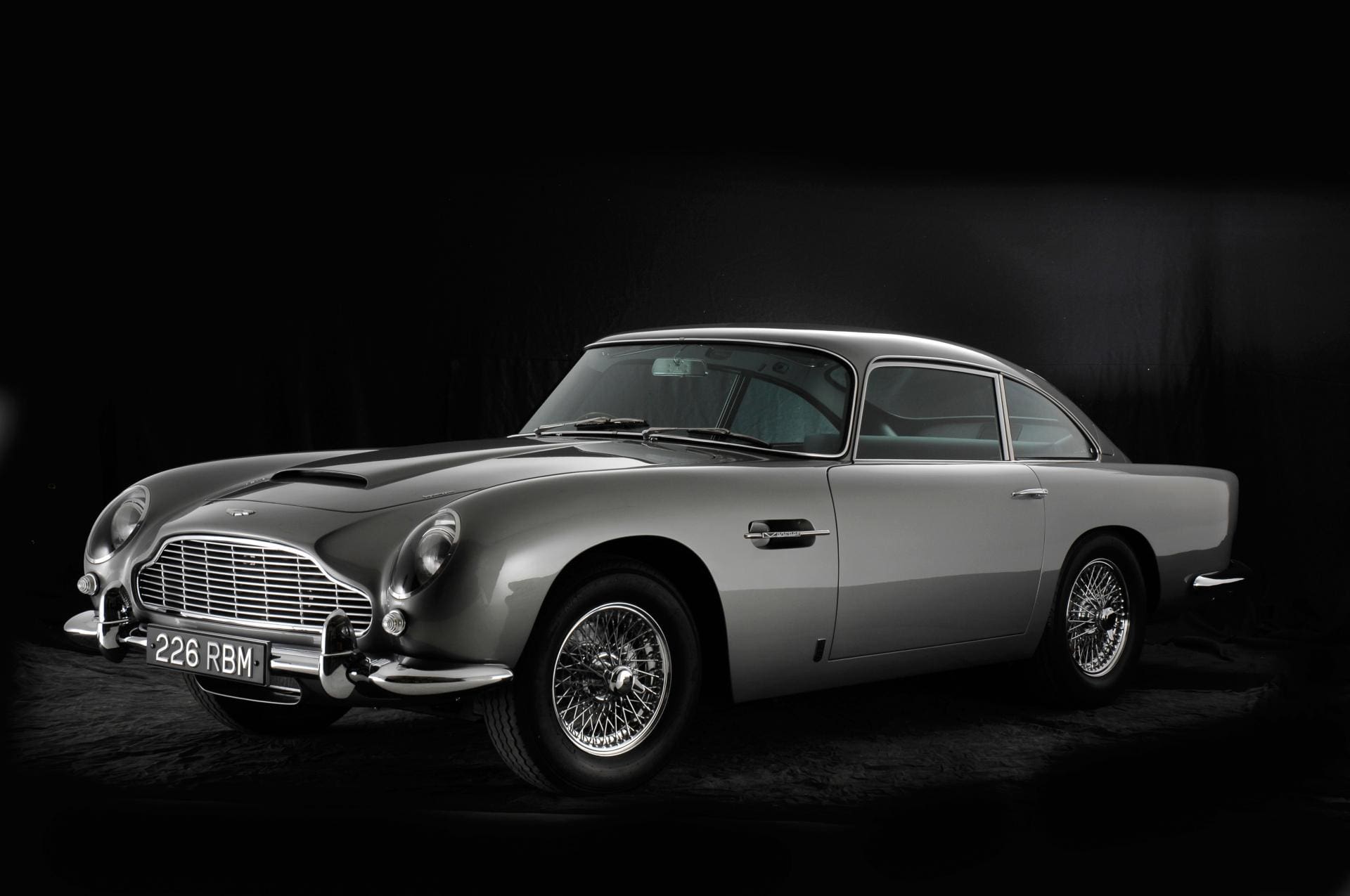
Aston Martin has a lot for which to thank John Stears. Despite James Bond driving an Aston Martin DB Mark III in the novel, it was Stears, a special effects expert working on the Goldfinger film, that persuaded the British marque to make a DB5 prototype available for the 1964 picture. Two DB5s debuted at that year’s World Fair in New York under the banner ‘the most famous car in the world’. Thanks to various cameos in the 007 franchise since then, the car has come pretty close to living up to that claim.
The DB5 was the first Aston Martin to boast an all-aluminium (4-litre) engine. Despite the standard model coming with reclining seats, wool pile carpets, twin fuel tanks and even a fire extinguisher, the car was capable of reaching 145mph.
In August 2018, Aston Martin announced that it planned to build 25 replicas of the DB5 seen in Goldfinger, equipped with some of the gadgets seen in the film. Deliveries began in December 2020 – well-heeled, 007-mad classic car collectors having paid around £3.3 million for a piece of cinematic motoring history.
Pagani Zonda
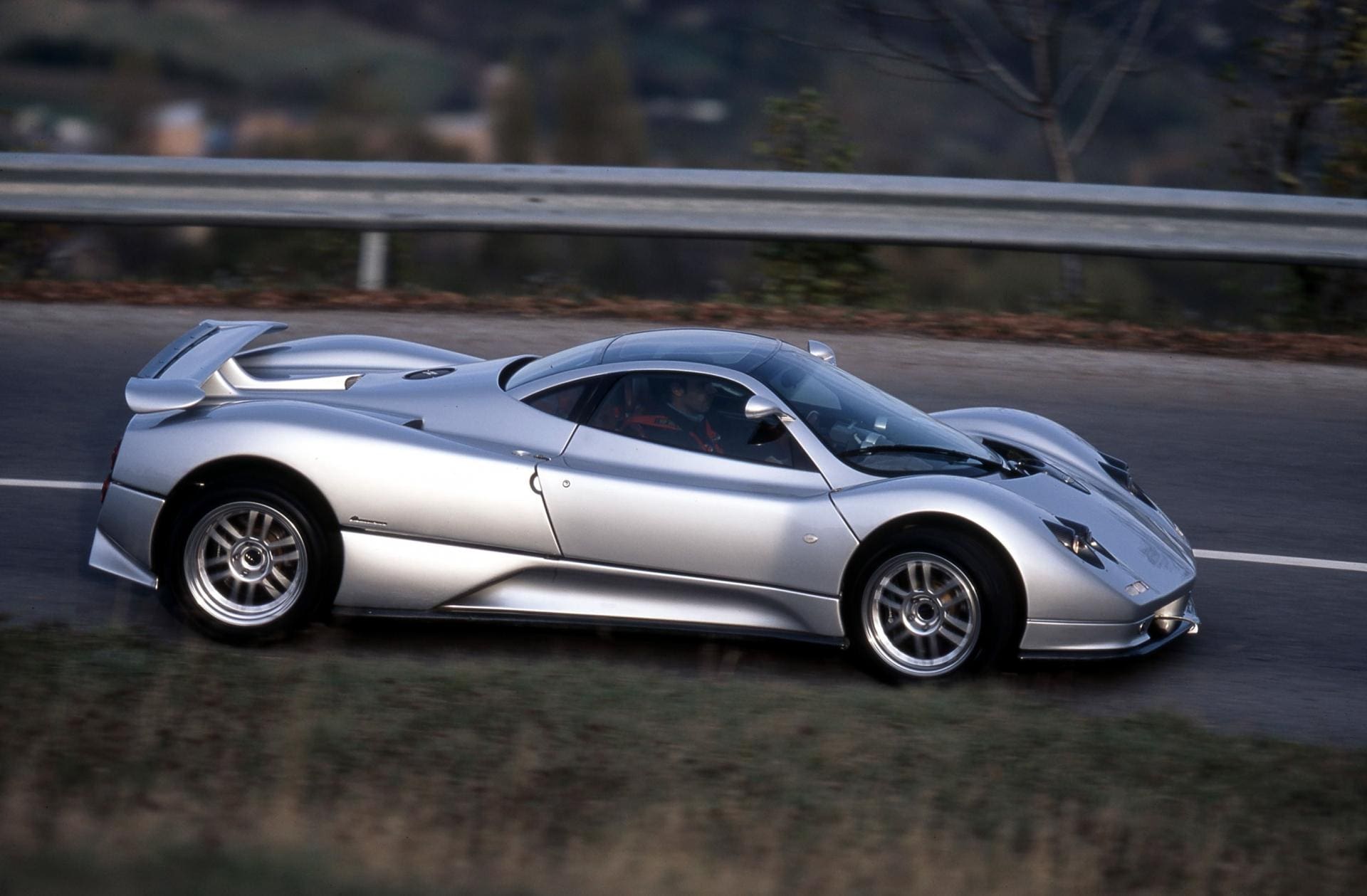
When Pagani began producing the Huayra in 2012, it did so with the intention of phasing out the Zonda. Yet so strong was the demand for the Italian supercar manufacturer’s flagship vehicle, that the marque kept making the model (in microscopic numbers for customers that included Lewis Hamilton) until 2019 – 20 years after the two-door, mid-engine sports car wrote the headlines at the 1999 Geneva Motor Show.
Founded by Horatio Pagani, an Argentinian carbon-fibre specialist previously of Lamborghini, Pagani established a composite-materials R&D company with the aim of manufacturing his own supercar. The Zonda C12, with its six-litre, V12 Mercedes-Benz engine, was the culmination of that ambition. Only five of the original models were made.
Ford GT40
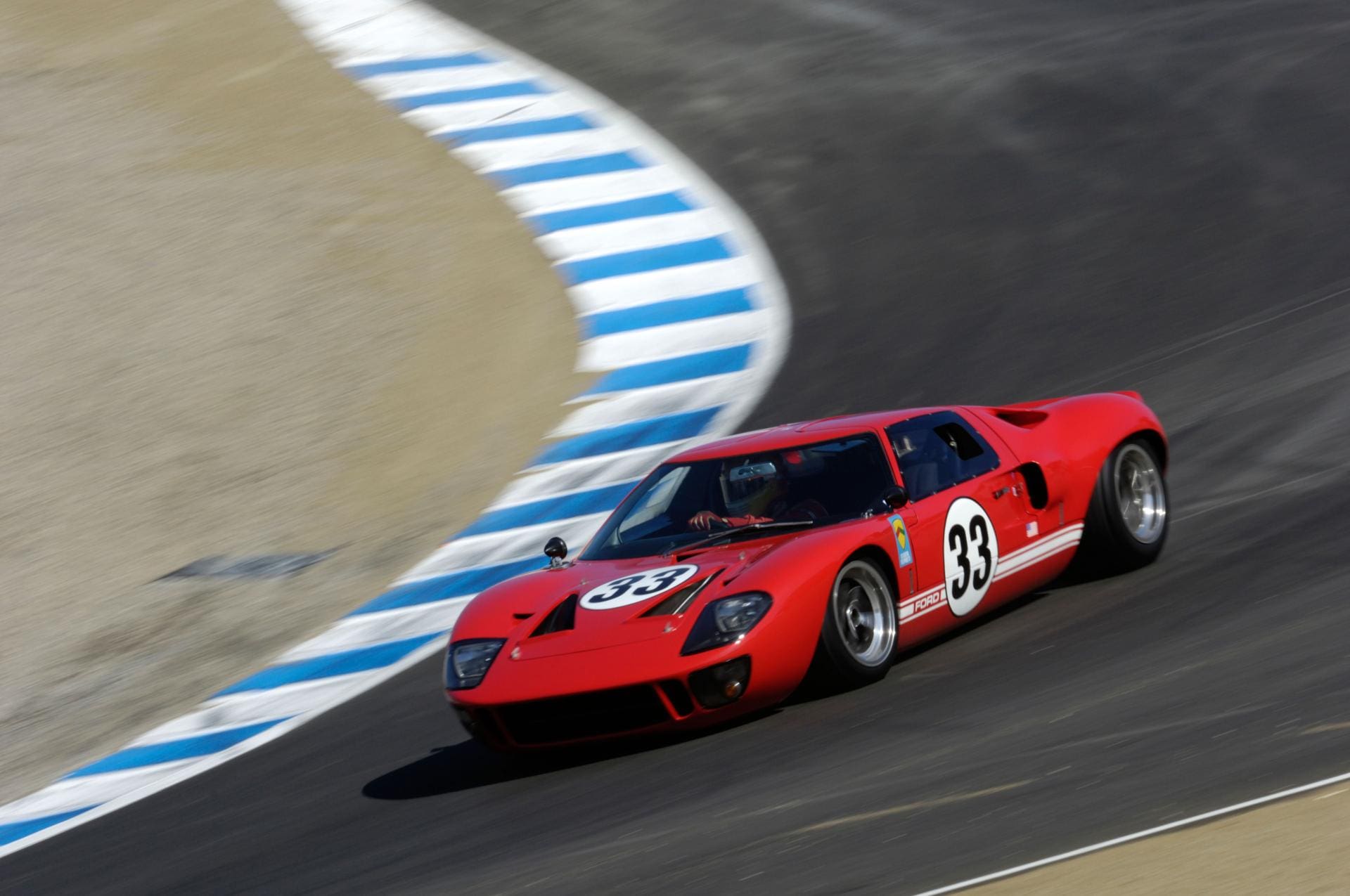
The Ford GT40, arguably the world’s most famous endurance racing car, was never actually called the GT40. It was a modified version of the British Lola Mk6. The number ‘40’ was proposed in reference to the car’s height – the tip of its windscreen measuring just 40 inches from the ground.
If you’ve seen the 2019 film Le Mans ’66 – released as Ford v Ferrari in the United States – you’ll be familiar with the story. Enraged at not being able to buy Ferrari in 1963 – an agreement was almost struck, before Enzo Ferraro reneged on the deal in the final stages – Henry Ford II reportedly instructed his racing division to ‘go to Le Mans, and beat his ass’. The car Ford’s engineers built to do so was unveiled the day before the New York auto show in April 1964.
In February 1966, after two years of lacklustre performance, and now under the stewardship of automotive engineer Carroll Shelby, a Ford GT Mark II finished 1st, 2nd and 3rd at the Dayton 24 Hours. In March of the same year, it took the top three places at the 12 Hours of Sebring. Then, in June, it achieved another 1-2-3 at the 24 Hours of Le Mans – with Henry Ford II looking on.
Mercedes 300SL ‘Gullwing’
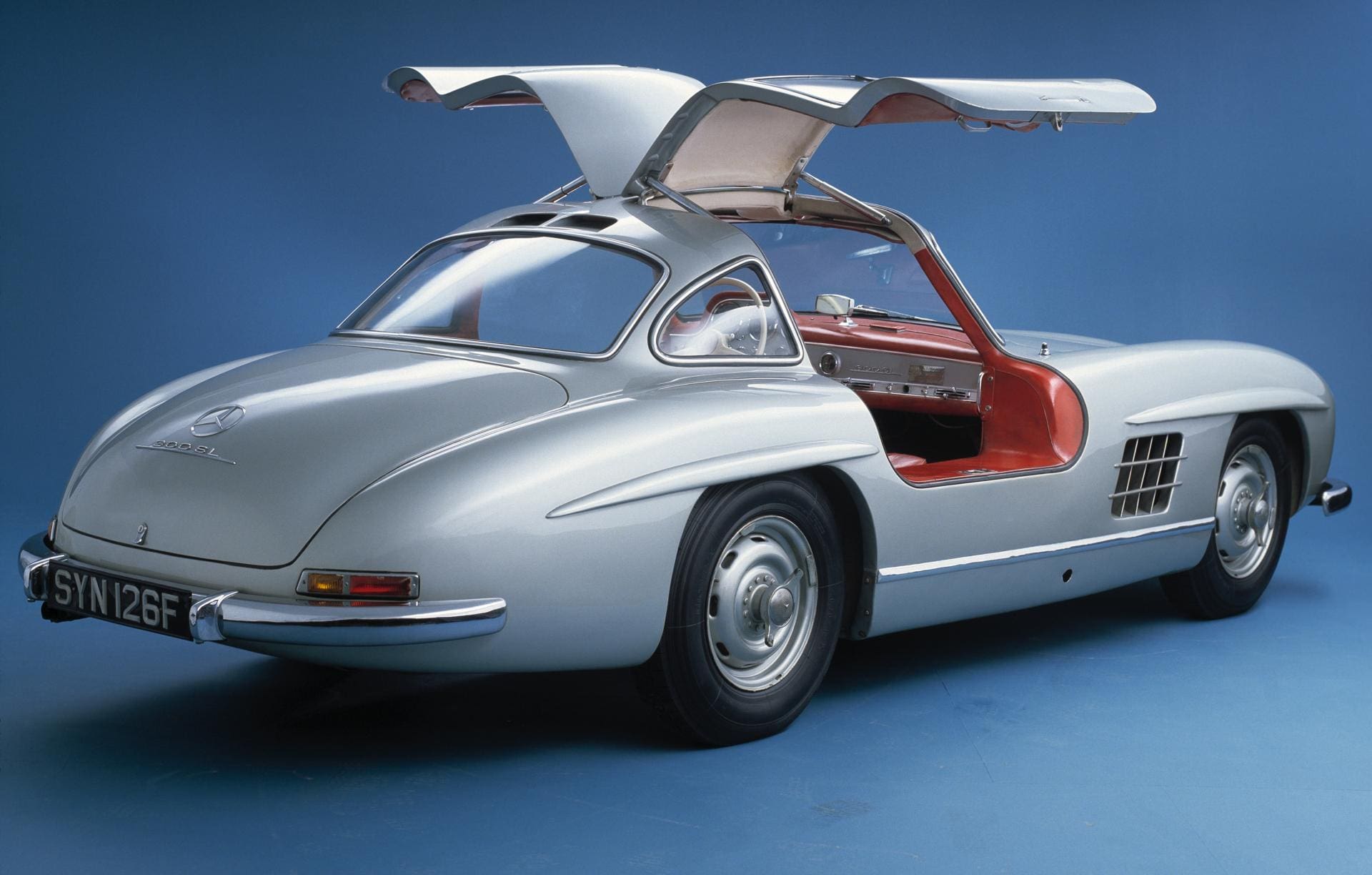
Pioneering the gull-wing door, where hinges open from the roof, the Mercedes 300SL became famous not just for its instantly iconic styling but also its stupendous performance. In 1955, upon its release, it was the world’s fastest production car. Powered by the straight-six M198 engine, which produced 240hp, the car rocketed to speeds of over 150mph. Considering the circumstances surrounding Daimler-Benz at the time – the Stuttgart manufacturer’s plants had been totally obliterated by Allied bombing a decade earlier – it’s a miracle that the 300SL even made it to production.
A total of 3,258 were built, of which 1,858 were the Roadster version. As the millennium drew to a close, it was voted the Sports Car of the Century by Auto Motor Sport magazine. It’s not hard to see why good examples today can easily fetch £1.5m at auction.
Ferrari Dino 246 GT
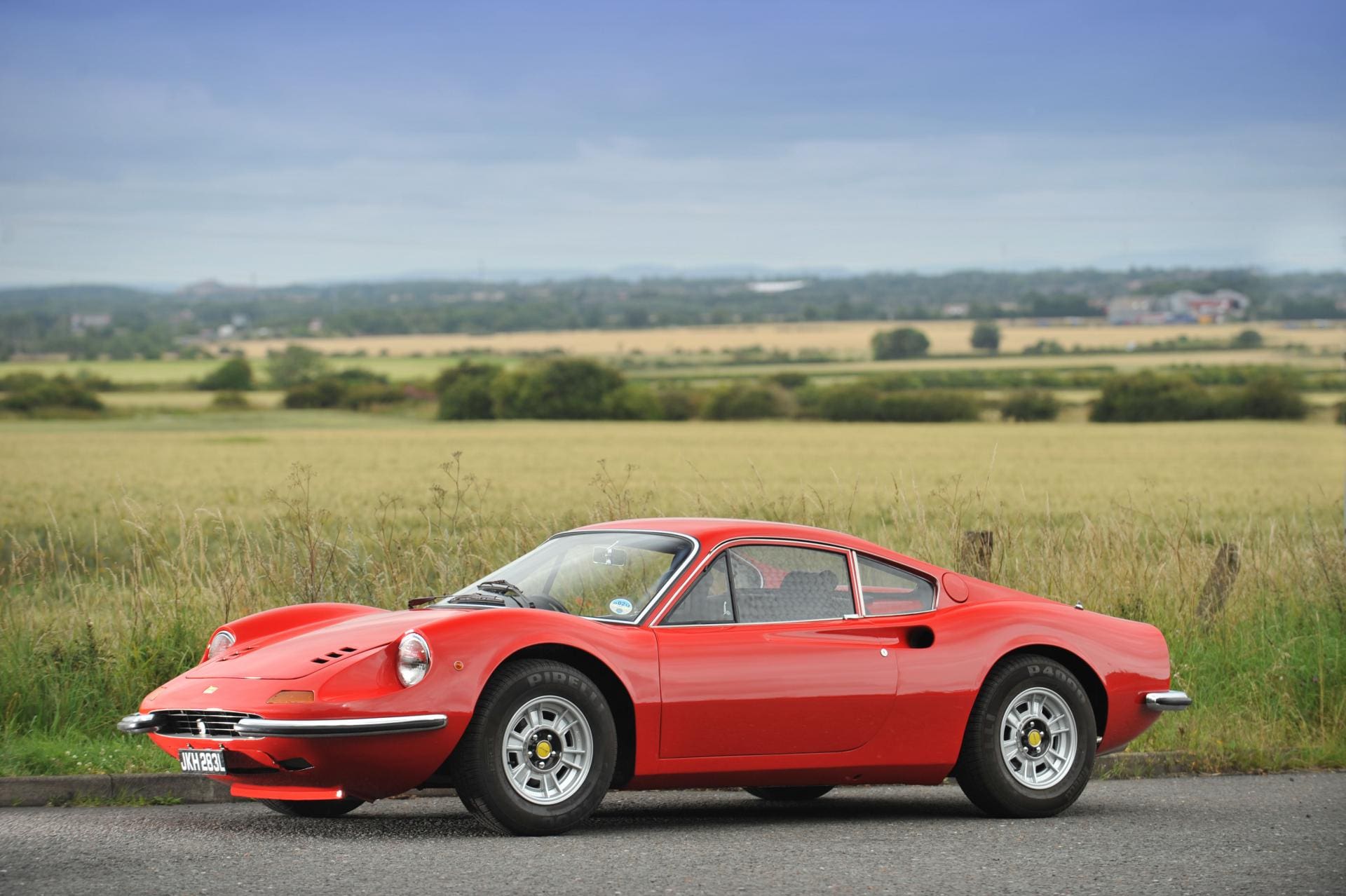
Though not technically a Ferrari, the Dino 206 and 246 were arguably the most personal projects undertaken by Enzo Ferrari. Alfredo ‘Dino’ Ferrari, born in 1932, was one of Enzo’s two sons. Sent abroad for his studies, the young Alfredo returned to Italy and was immediately sent to work alongside race-car genius Vittorio Jano on Ferrari’s small V6 engine for Formula 2. Aged 24, however, the youngster succumbed to muscular dystrophy.
From thereon, Enzo named all V6 engine Ferraris after his lost son. The Dino 246, based on the earlier 206, utilised the two-litre V6 partly worked on by Alfredo and was clothed in a stunning steel Pininfarina body. Praised for its styling and dynamic handling thanks to its low weight, the ‘baby Ferrari’ was a milestone in Ferrari’s history: it was the first non-Ferrari badged car, the manufacturer’s first non-V12-engined road car and the first mid-engined road car that Ferrari ever made.
Ferrari F40
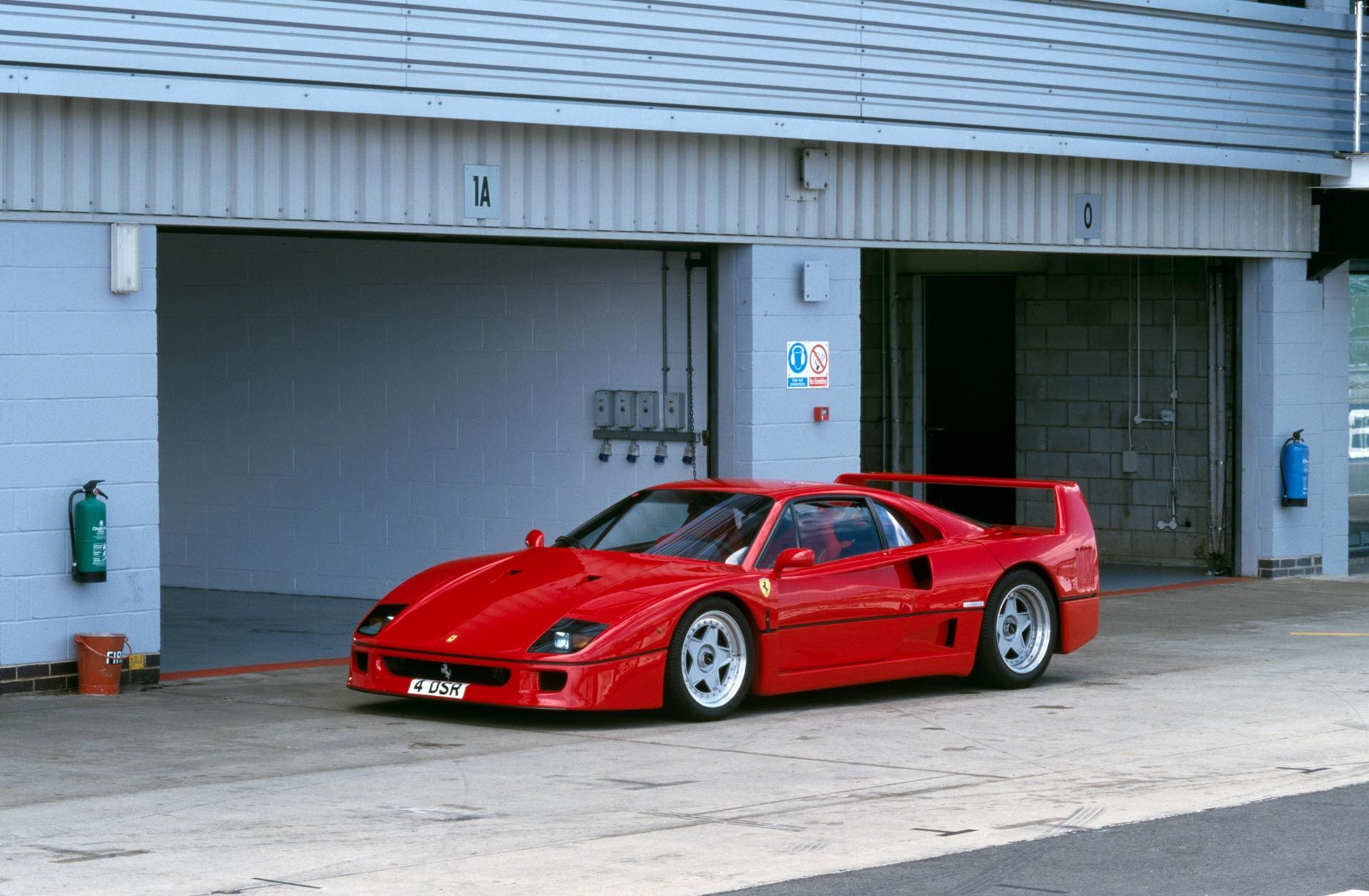
Built to commemorate Ferrari’s 40th anniversary in 1987, the Ferrari F40 was the last model personally approved by Enzo Ferrari before his death. With its fearsome reputation as a widow maker – partly due to how ferociously the turbos ramped-up the power – the F40 took the term ‘supercar’ to a whole new level, creating an analogue experience resolute in its goal: to reward driver involvement and skill above everything else.
There was no stereo, no leather (Alcantara instead, to make it lighter), nor were there any driver aids like power steering, traction control or anti-lock brakes. Ferrari initially planned on making 400 vehicles but such was the positive feedback from customers, they ended up manufacturing a total of 1,315, with most examples setting you back around a million quid today. Last year, an Australian made headlines when he crashed his beloved F40 on the way to selling it to the next owner – the car was uninsured.
Bugatti Veyron
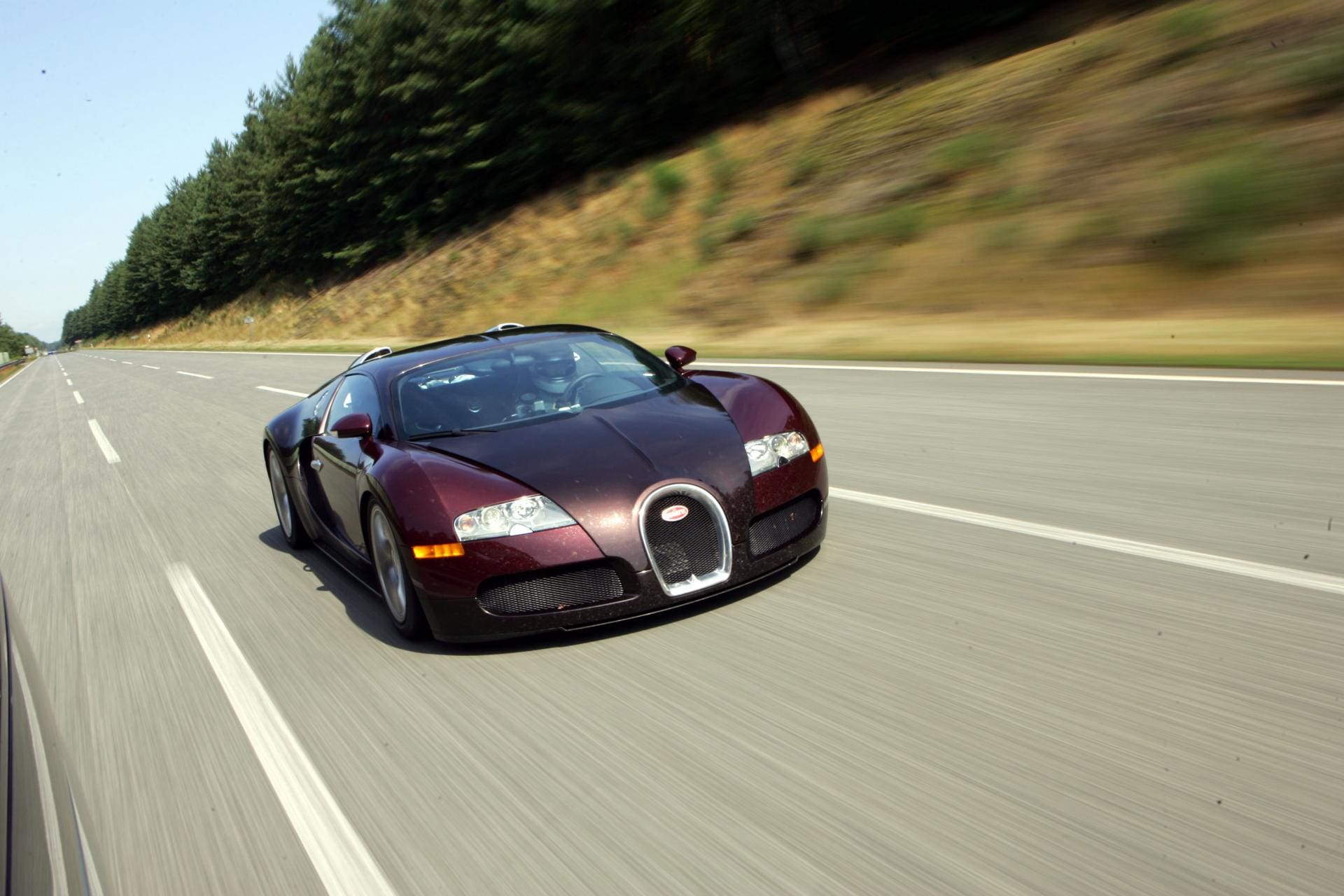
Cast your mind back to 1998. Austria’s Ferdinand Piëch, then chairman of the Volkswagen group, had acquired the rights to use the Bugatti logo and trade name. Piëch, who was so exacting in the requirements of his vehicles that many engineers would crumple under the pressure and resign, said Bugatti would build a 1,001-horsepower car capable of more than 400km/h and 0-100km/h in less than three seconds. It would also be no less usable than a Golf. Even by today’s ludicrous standards, the Veyron’s figures still make you balk.
The eight-litre W16 engine (Piëch originally wanted a W18, but had to compromise) has four turbochargers and, at maximum capacity, gulps 47,000 litres of air per minute — as much air as one man breathes in four days. It held the record for being the world’s fastest production car for several years, when it was overtaken by the American-made SSC Ultimate Aero TT. Bugatti came back with a vengeance and released the Veyron Super Sport in 2010 – boasting 1,184hp it was capable of 431.072 km/h (267.856 mph) – demolishing the competition in the process.
Lamborghini Miura
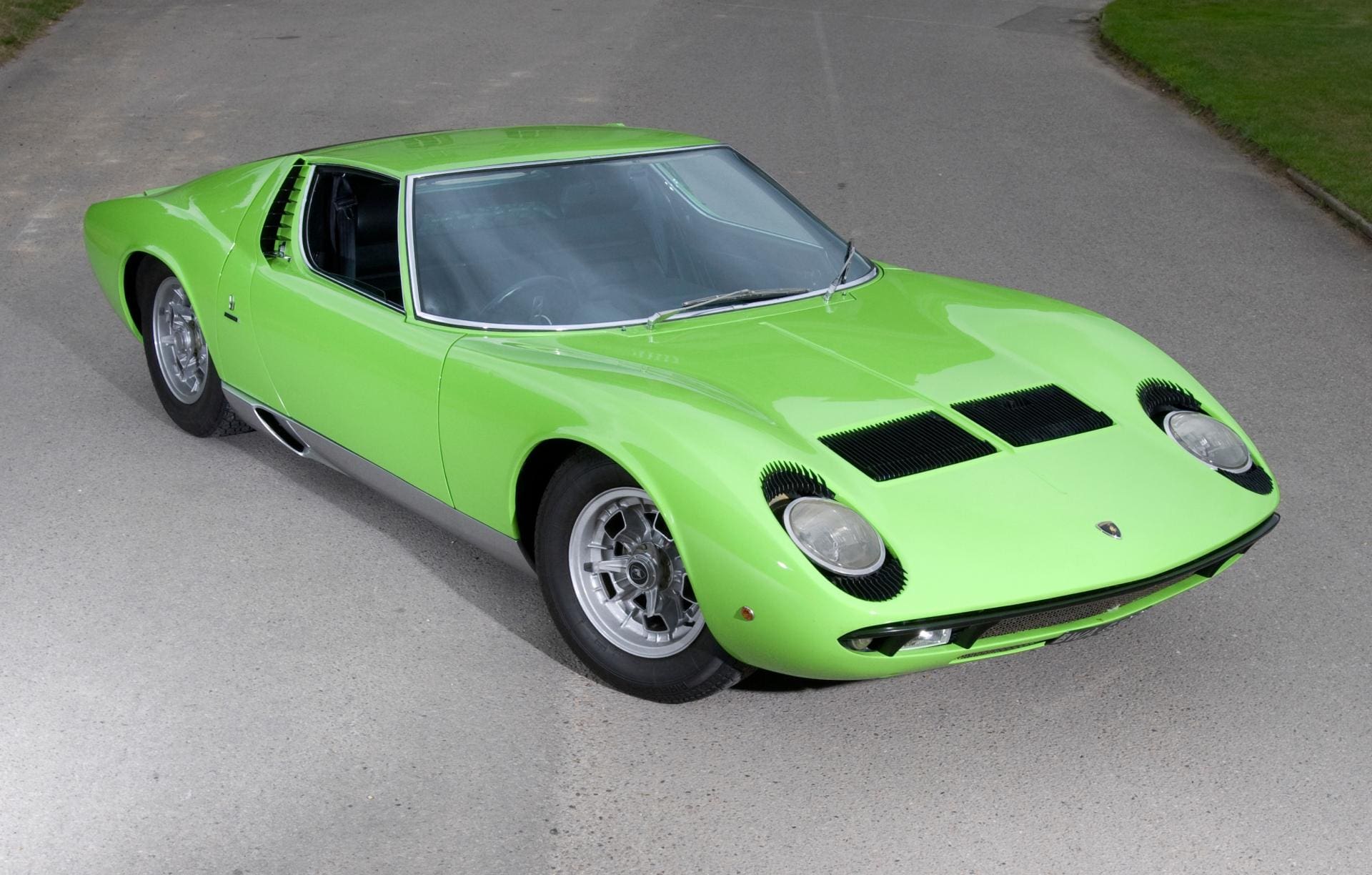
It was a snub that led to the world’s most famous raging bull. By the early 1960s, Ferrucio Lamborghini had made himself a very wealthy man by manufacturing Lamborghini tractors from surplus military vehicles and parts. As a petrol-head with disposable income, he bought himself a Ferrari – a 250 GT, to be precise. When the clutch from his favourite car failed, he decided to fix it, in the process realising that he could supply Ferrari with his clutches. Upon meeting Enzo Ferrari, however, the industrialist was brushed off and told to stick to farming equipment. The rest, as they say…
The Miura of 1966, though not the company’s first car, was the world’s first mid-engined production supercar. Arguably the most evocative Lamborghini ever made, if not the definitive sixties supercar, the Marcello Gandini-designed silhouette was revolutionary, seamlessly blending brute force with voluptuous curves. The headlight surrounds, for instance, were supposedly inspired by the eyelashes of a woman. The Miura is unapologetically visceral, completely impractical and totally Italian.
Footman James is one of the UK’s leading specialist vehicle insurance brokers with over 35 years’ experience. Their Private Clients team currently provides cover for £1.3 billion worth of assets within their portfolio and can provide cover for not just prestigious vehicle collections, but for home and marine, too. Their Private Client team is also incredibly experienced, with an average service length of 13 years with Footman James. To find out more about their Private Client policies visit footmanjames.co.uk and request a call back from the team


